Living willow structures have captivated the imaginations of many with their natural beauty and functional appeal. These structures, made from living willow branches, offer a sustainable and aesthetically pleasing alternative to traditional structures.
Dating back centuries, the art of crafting living willow designs has roots in ancient cultures. From the elaborate willow structures of the English royal gardens to the traditional living willow huts of indigenous communities, these living creations have stood the test of time.
In ancient times, living willow structures were used for practical purposes such as fences, windbreaks, and animal enclosures. Over time, their purpose expanded to include ornamental and artistic elements, adding a touch of magic to gardens and landscapes.
Today, their popularity continues to grow as people seek environmentally friendly and visually striking alternatives.
So let’s explore the world of living willow structures, their origins, benefits, and how you can create your own enchanting projects.
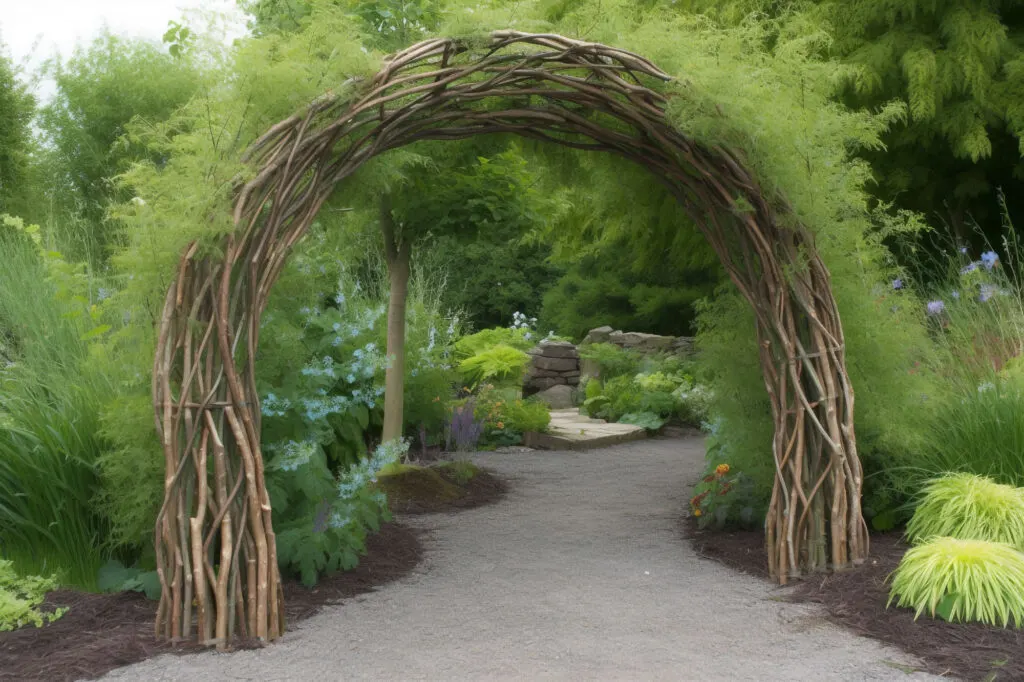
Key Takeaways:
- Living willow structures offer a sustainable and aesthetically pleasing alternative to traditional structures, adding natural beauty and functionality to any space.
- These structures provide environmental benefits such as erosion control, enhanced biodiversity, and carbon sequestration, contributing to a healthier ecosystem.
- Creating a living willow structure involves selecting the right willow species, preparing the site, and establishing the structure through planting techniques and regular maintenance.
- Living willow project ideas include archways, fences, domes, furniture, and playhouses, allowing for endless creative possibilities.
- Tips and considerations for living willow projects include considering size and space requirements, regular maintenance and pruning, and adhering to local regulations.
- By embracing living willow structures, you can create enchanting spaces, promote sustainability, and experience the unique charm of these living creations.
Benefits of living willow structures
Living willow structures offer many benefits for the environment and those interacting with them. Below are some of the key advantages of incorporating willows into your surroundings.
Environmental benefits
1. Erosion control: Because of their extensive root systems, willow trees are a great way to help stabilize soil. This makes them an excellent choice for areas prone to erosion, like creek banks.
2. Enhanced biodiversity: Willow trees provide habitats and food sources for a variety of wildlife, attracting birds, insects, and other beneficial organisms to your garden or landscape.
3. Carbon sequestration: As with all living plants, willows actively absorb carbon dioxide from the atmosphere, helping mitigate climate change by locking carbon away in their biomass.
Aesthetic and functional benefits
1. Natural beauty and visual appeal: The graceful, flowing branches of willows create a unique and visually stunning element in any setting, adding a touch of enchantment and charm to your space.
2. Shade and privacy: As the willow branches grow and interweave, they form a dense wall of foliage and thick, leafy canopies that provide shade and privacy, making willow installations ideal for creating secluded and tranquil areas.
3. Versatility and adaptability: Willows can be molded into various shapes and sizes, allowing for endless design possibilities. From willow arches to outdoor garden rooms and furniture, the versatility of living willow opens up a world of creative options.
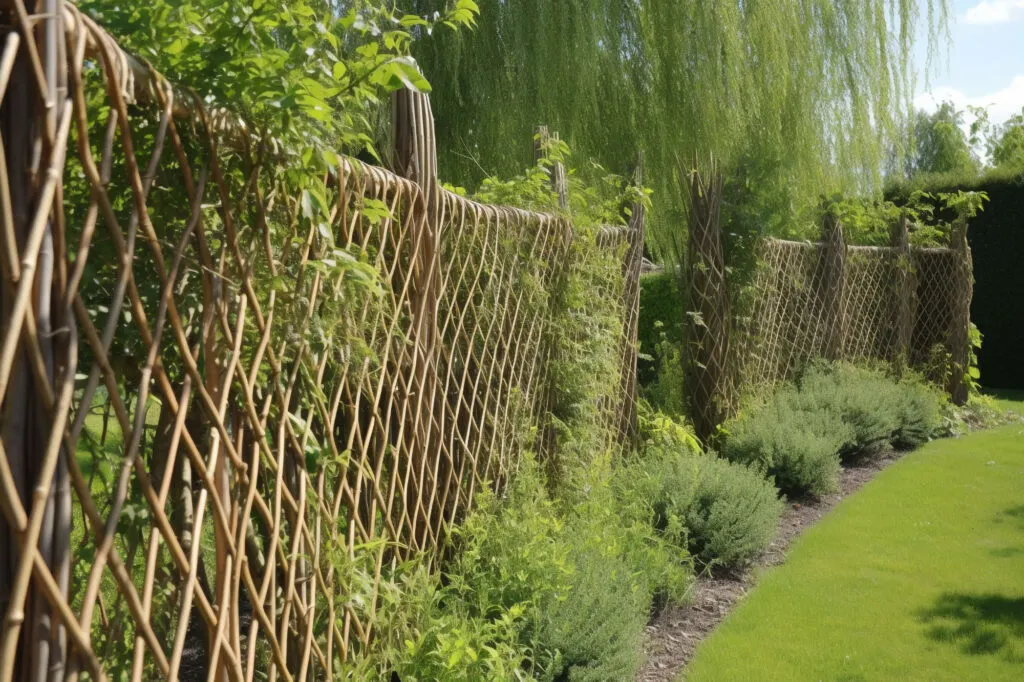
How to create a living willow structure
Whether you’re interested in building a simple willow fence for your garden or embarking on a more ambitious project like a willow dome or gazebo, the process involves a few key steps. Let’s explore how you can bring your living willow project to life:
1. Choose your location: Willow trees love moist soil, so choose a location near a water source or in an area with moisture-retentive soil. The location should also be exposed to sunlight for at least half the day.
2. Select a suitable willow species: Different species of willows exhibit varying growth habits, branch flexibility, and resilience to different climates. Research and choose a willow species that aligns with your project goals and local conditions.
Living willow rods can be purchased from a garden center or online, or you can take cuttings from willows on your property or elsewhere (with permission).
Willows are part of the genus Salix, family Salicaceae. Some popular will varieties include salix viminalis, s. daphnoides (daphne willow), s. alba (white willow), s. alba var ‘Vitellina’ (golden willow), and s. purpurea. To find the best type of willow for your location, see what willow species are thriving nearby or ask a professional in your area.
3. Gather your materials: You will need willow plants purchased from a supplier or fresh cut willow branches, an old screwdriver or piece of rebar (or something similar to make holes in the ground), and garden clippers.
4. Prepare the soil: Clear the area of weeds, rocks, and debris to create a suitable foundation for your living willow project. Use your screwdriver or rod to make planting holes in the soil.
You can optionally add compost to the soil to give your willow a good start, or place it around the base of the structure once you have your willow cuttings planted.
5. Plant your willow rods: Whether you have short cuttings or large willow rods, the planting process is the same. Use garden clippers to trim off any dead or dried out parts of your willow cuttings. Gently place willow rods into the soil and pat the dirt in around them until they are firmly in place. If your cuttings do not yet have roots, make sure you place the thick ends down.
They should be about six inches apart, but the spacing will ultimately depend on the living structure you plan to build.
Willow cuttings do best when planted in fall or spring. Unrooted cuttings tend to grow roots pretty easily when placed directly in soil and kept well-watered, but you can give them a head start by soaking them in a bucket of water for a few days before planting.
6. Keep your willows hydrated: Water your willow structure regularly, especially during the first few months. This will help the willow roots get established and promote growth. You can mulch the area around the base of the cuttings with wood chips to help retain moisture.
7. Trim and shape your structure: The training process takes time, but willow branches grow quickly and are flexible and easy to maneuver into your desired shape.
Whether you’re building a lattice fence or a dome shape for a shelter, begin weaving the branches and shaping your structure as soon as your willows start putting out new growth. Once your willow structure has grown to the size you need, trim it regularly to keep its shape and promote continued growth.
Tips and considerations for living willow projects
While building with willows is rewarding, it’s important to keep a few things in mind to ensure successful outcomes. Here are some key points to consider:
1. Size and space requirements: Before starting a living willow project, evaluate the available space and consider the potential size and growth of your willow species. Ensure that your chosen location can accommodate the mature dimensions of your structure.
2.. Maintenance and pruning: Regular maintenance is crucial to keep your willow structure healthy and well-shaped. Prune and trim the branches as needed to maintain the desired form and remove any diseased or damaged growth.
3. Timing and seasonal considerations: The best time to establish living willow structures is during the dormant season, typically late winter or early spring. This allows the willow rods to establish a strong root system before the active growing season begins.
4. Local regulations and permissions: Check with local authorities or homeowners’ associations regarding any regulations or permissions required for installing living willow structures. Some areas may have specific guidelines or restrictions in place.
Living willow project ideas
Living willow structures offer endless possibilities for creative and practical use. From garden features to weaving projects, here are some inspiring ideas to spark your imagination:
1. Living garden art
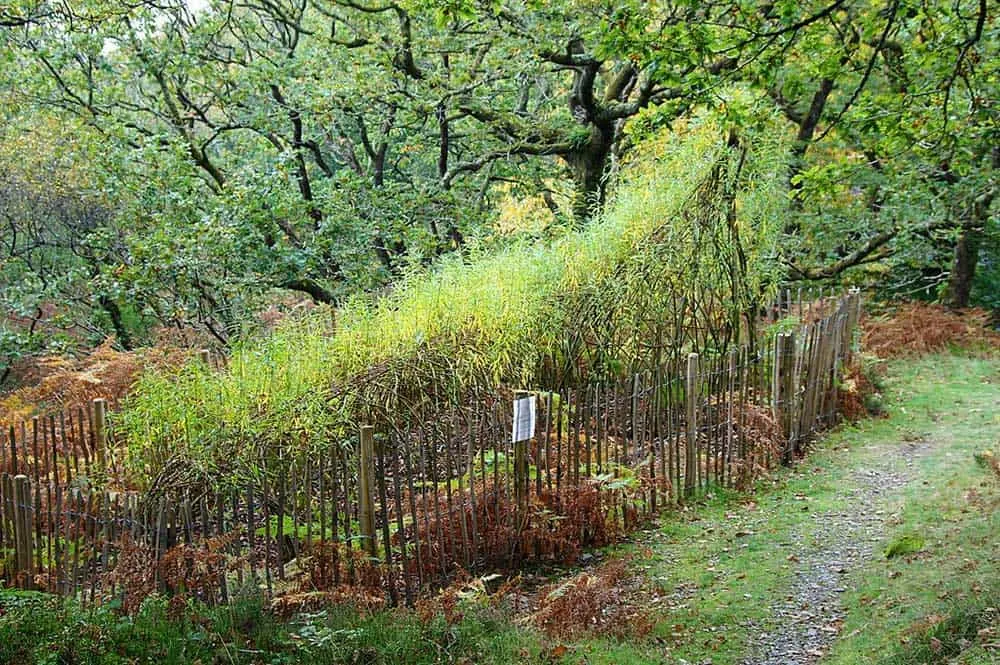
Willows can be turned into unique works of art that grow and change with the seasons, like this beautiful feature in the UK.
2. Living willow tunnel
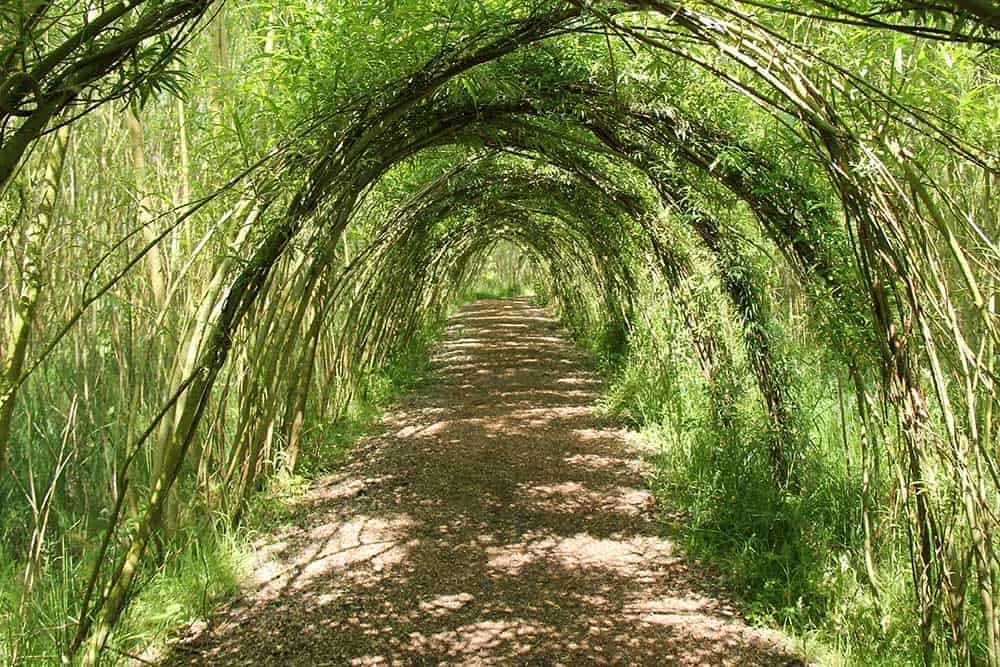
Create enchanting entryways or whimsical tunnels by bending and weaving willow branches into graceful arches. These structures can transform an ordinary garden path into a magical passage.
A willow tunnel is the perfect shady place to hang out on hot summer days, and kids love them! A tunnel like this could be built as long or as short as you need, depending on your available space.
3. Willow fence
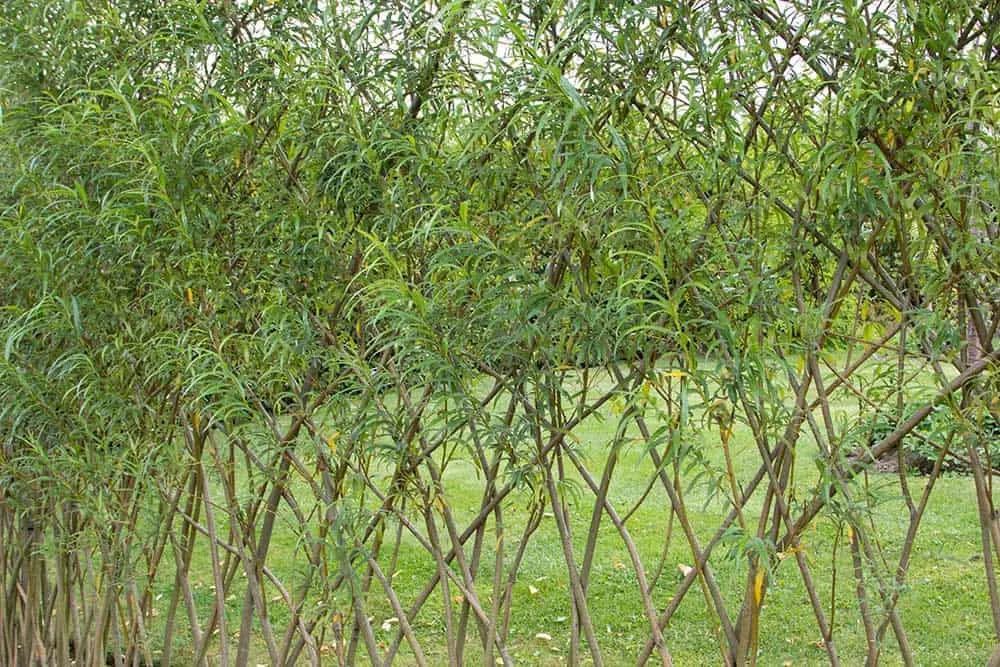
Fences made of willows are highly functional and easy to maintain. They can replace most traditional fences as they leaf out and create new growth. They are also a beautiful, natural way to enclose a yard.
4. Mature willow privacy fence
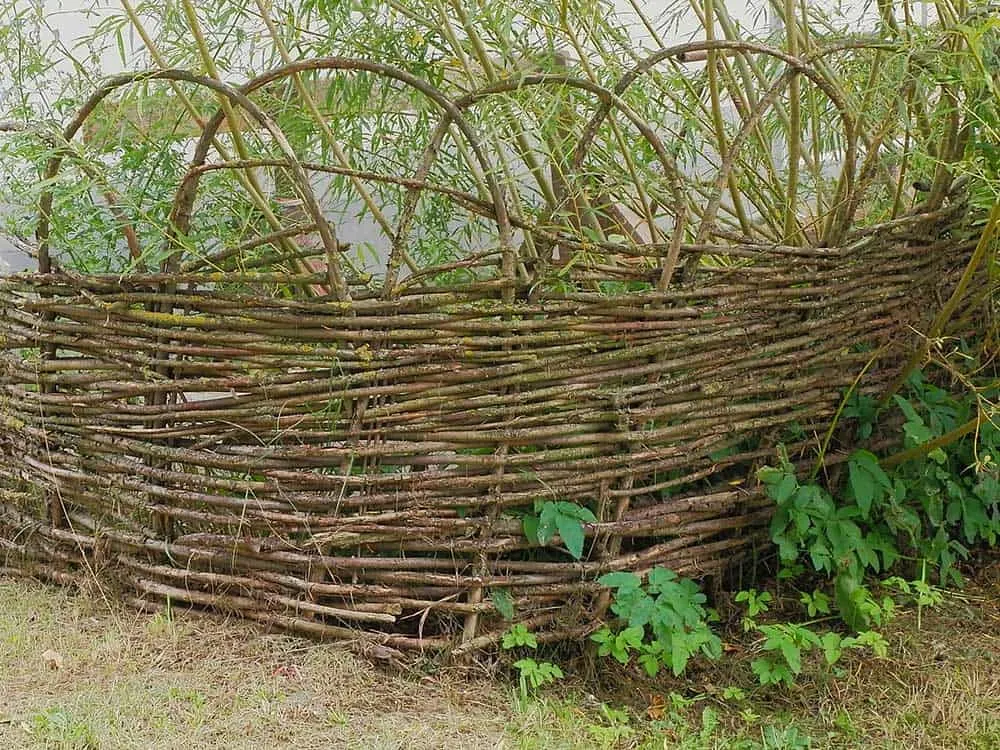
Here is an example of a more mature willow fence. The base is woven horizontally and the tops are left to grow vertically. This style makes an excellent privacy fence and is sufficient to keep most pets contained on a property.
5. Willow arbors…or a church?
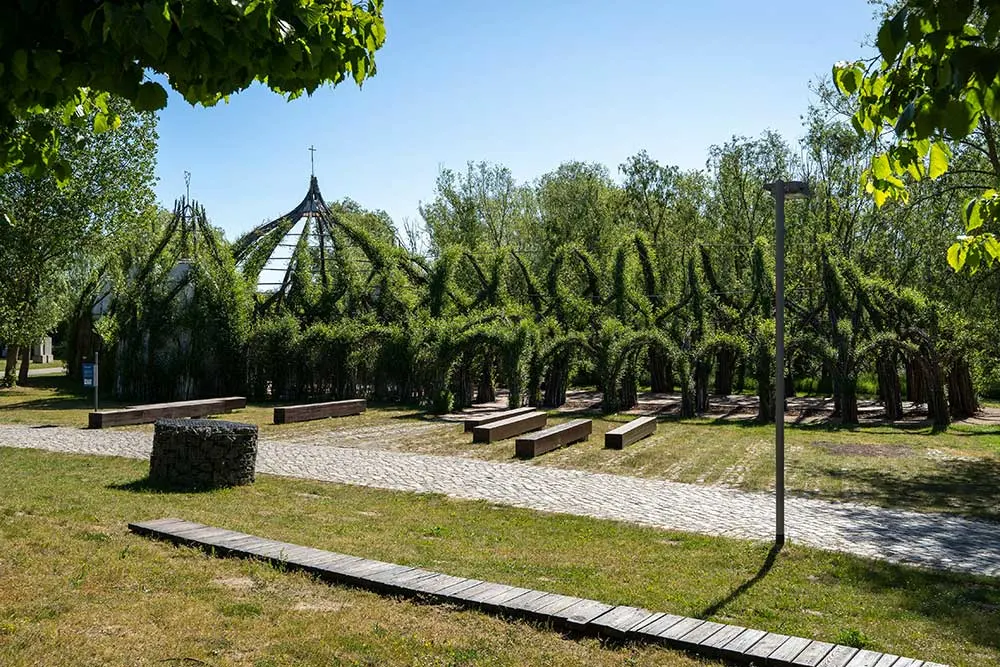
Amazing structures can be made out of willows, like this striking feature in Germany made from arches of various sizes. The cool thing is – this is actually a church.
A structure like this would make a beautiful and fun addition to any yard or park, requiring little maintenance once established.
6. Willow-sheltered seating area
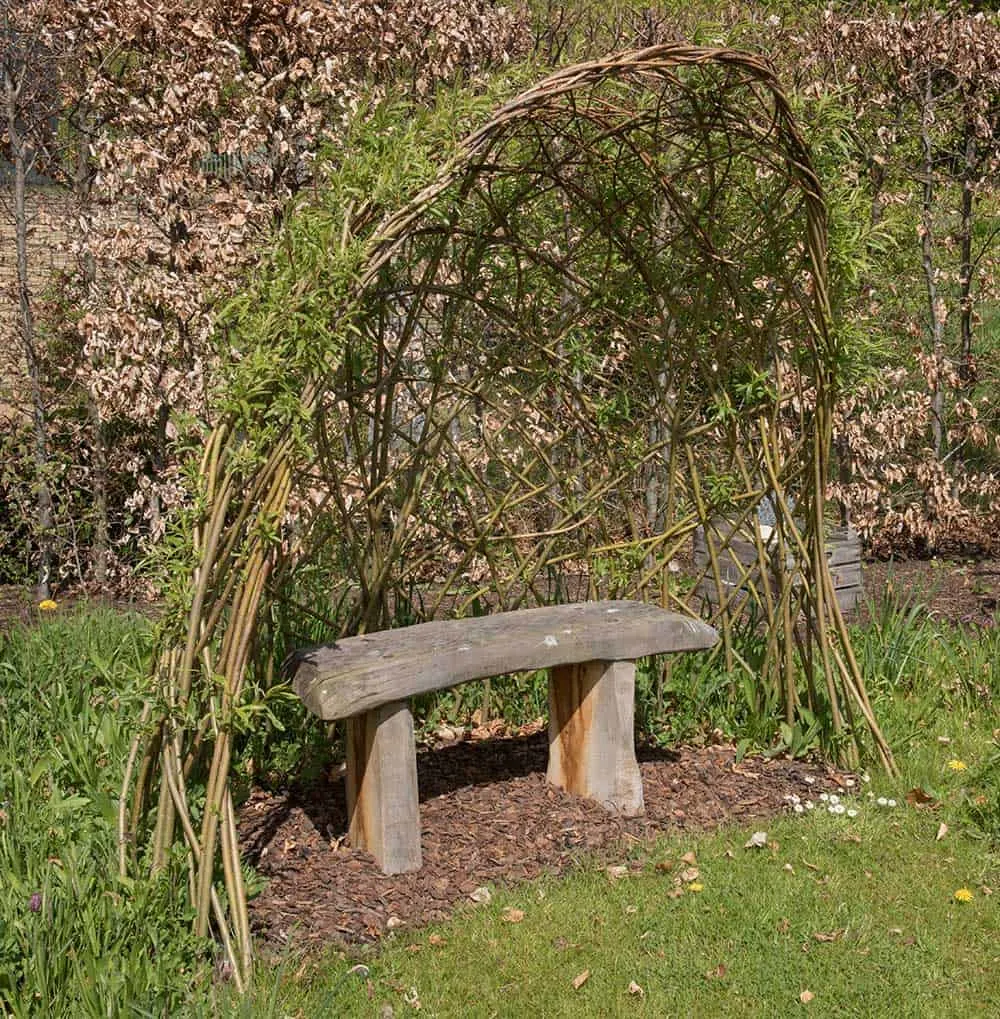
Craft beautiful and functional pieces of furniture, such as chairs, benches, or tables, using living willow branches. Let your creativity shine by sculpting intricate designs or organic shapes. This beautiful live willow seating area provides shade in a yard.
Willows can be woven and shaped into domes or half-domes for shelter and visual interest. Domed structures offer a unique ambiance and can be adorned with climbing plants for added beauty.
7. Willow fence in winter
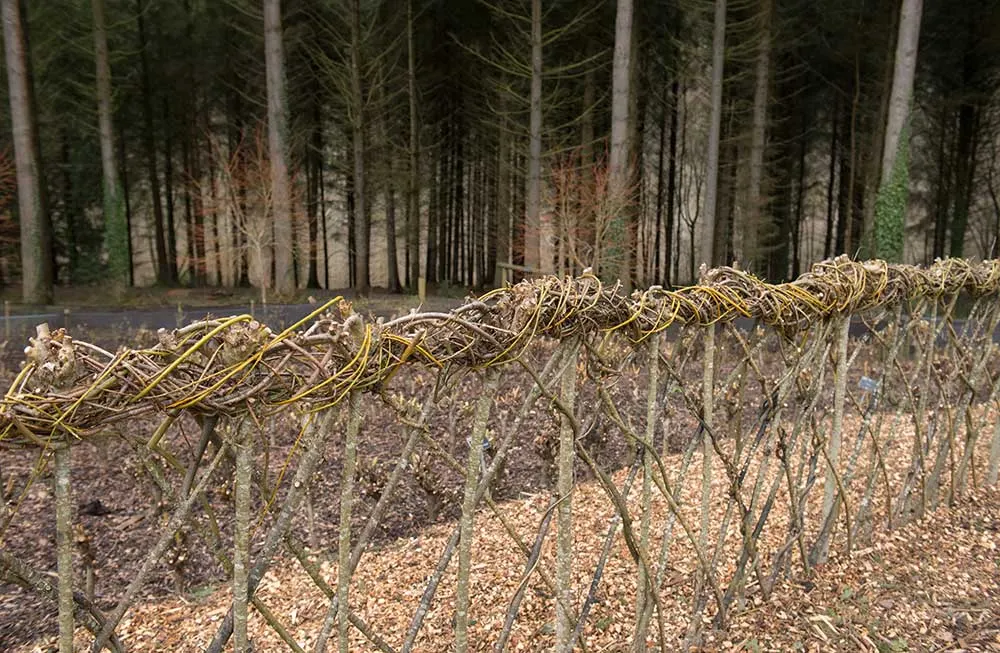
This living fence in England shows how beautiful a willow fence can be even in winter when the plants are dormant. It will fill out again with lush green leaves in spring.
8. Artsy willow tunnel
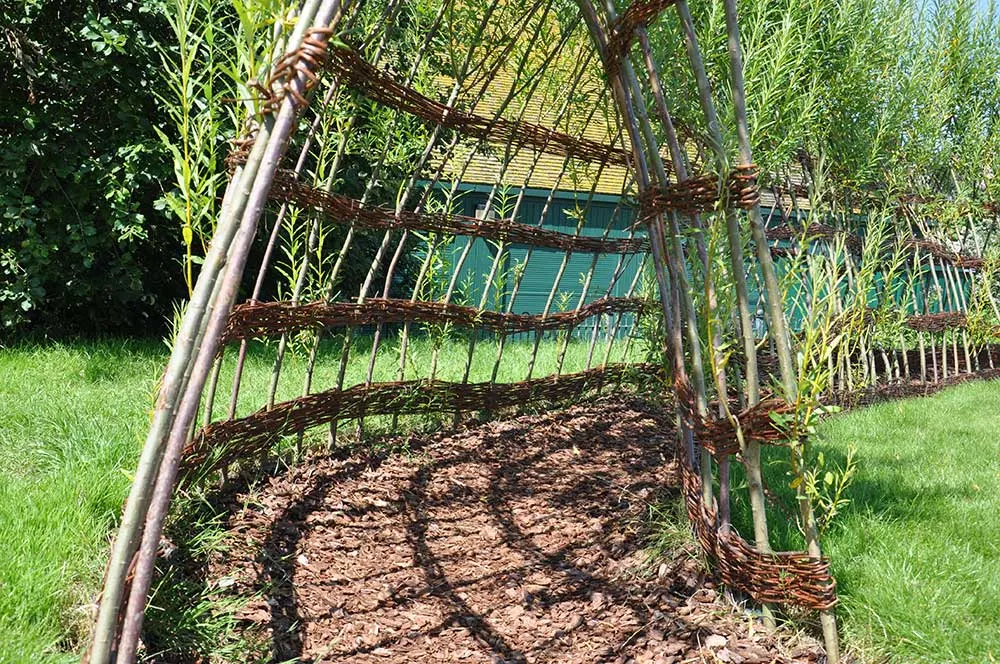
Willow creations can be very elaborate or very simple. Even a seemingly uncomplicated design like this tunnel in a park can have beautiful artistic appeal with its curvature and branches woven horizontally across the structure.
9. Willow fort for kids
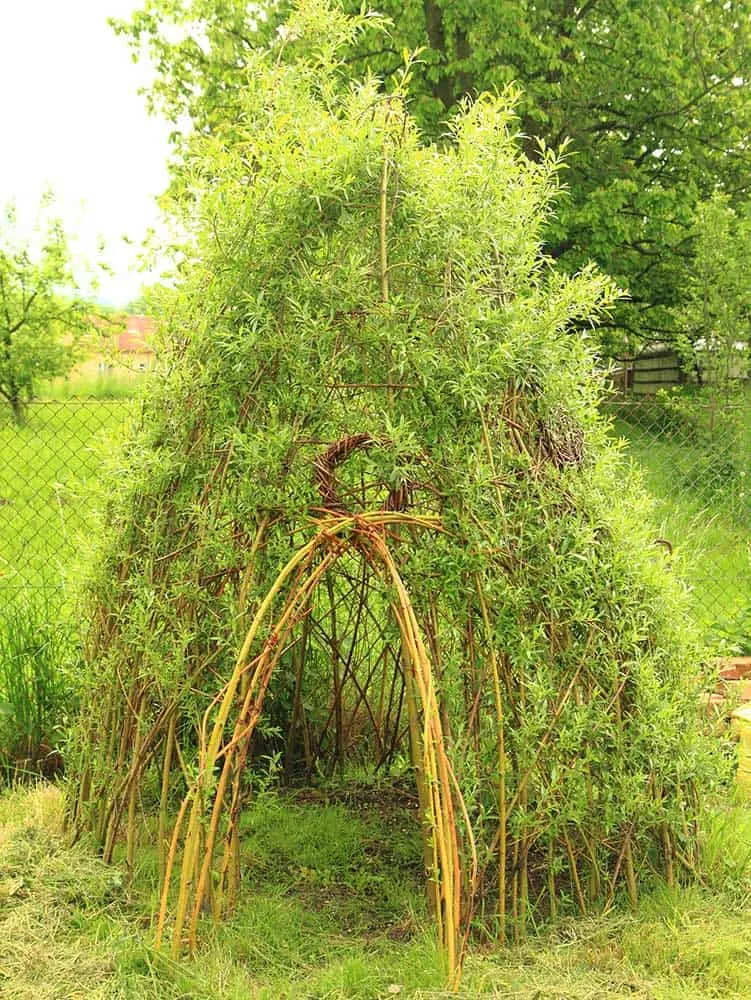
Delight children with living willow playhouses or secret huts. These whimsical structures offer a sense of adventure and provide a space for imaginative play. Here’s a fun example of a willow fort for kids.
We once built something similar with sunflowers, but willows would be great because they don’t have to be replanted every year. It could also become a snow fort in winter!
10. Willow tunnel in a garden
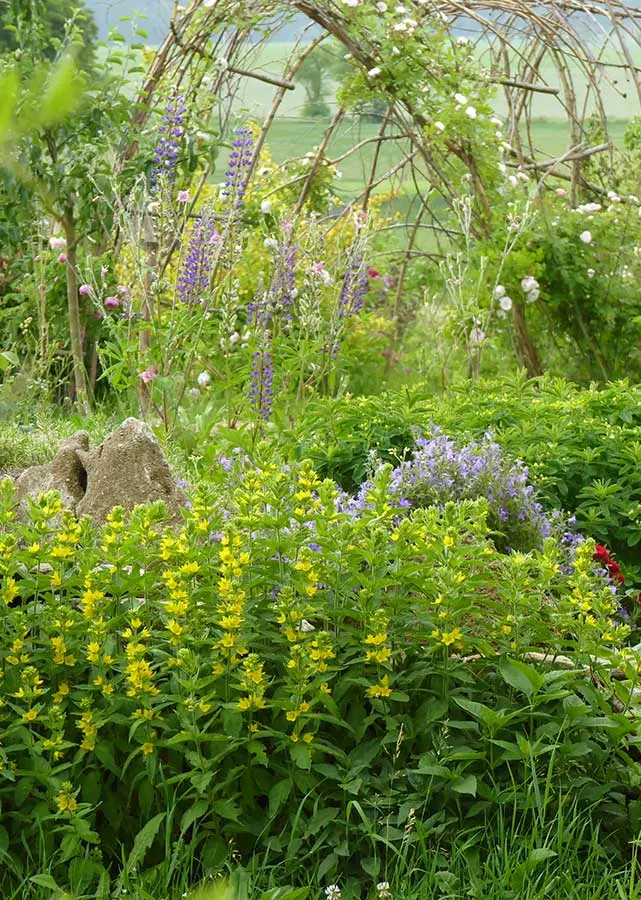
This willow tunnel adds some vertical space to a garden plot and acts as a natural divider between the garden sections.
11. Arch sculpture
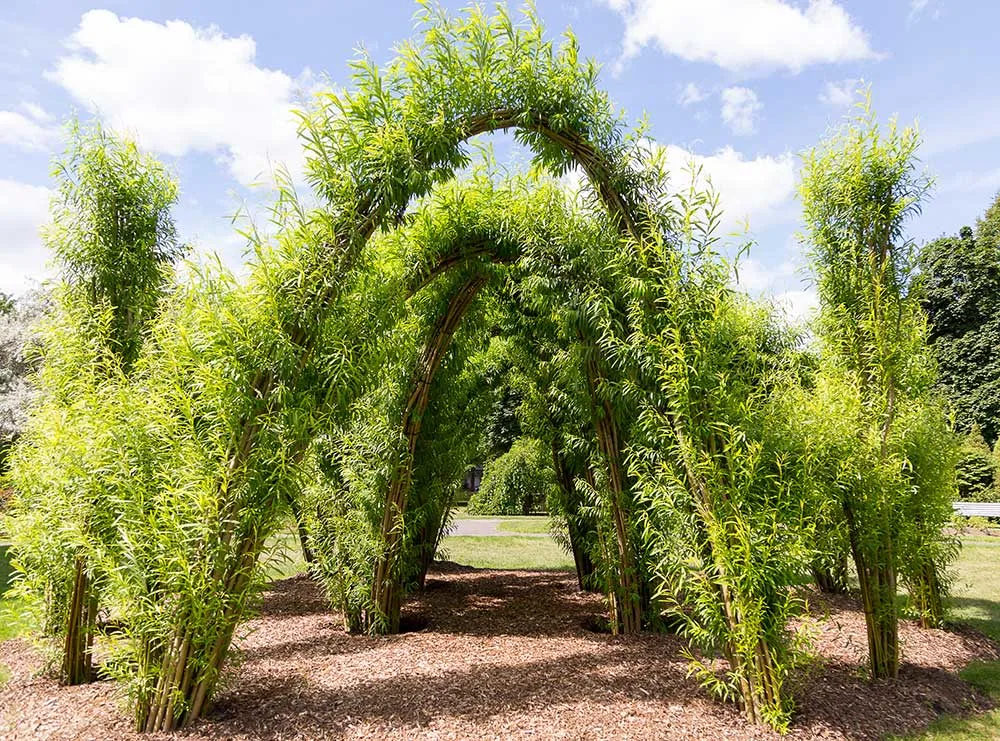
Here is another creative arch design using live willows. The feature is a work of art that doubles as a fun place to find some shade.
12. Willow sculptures
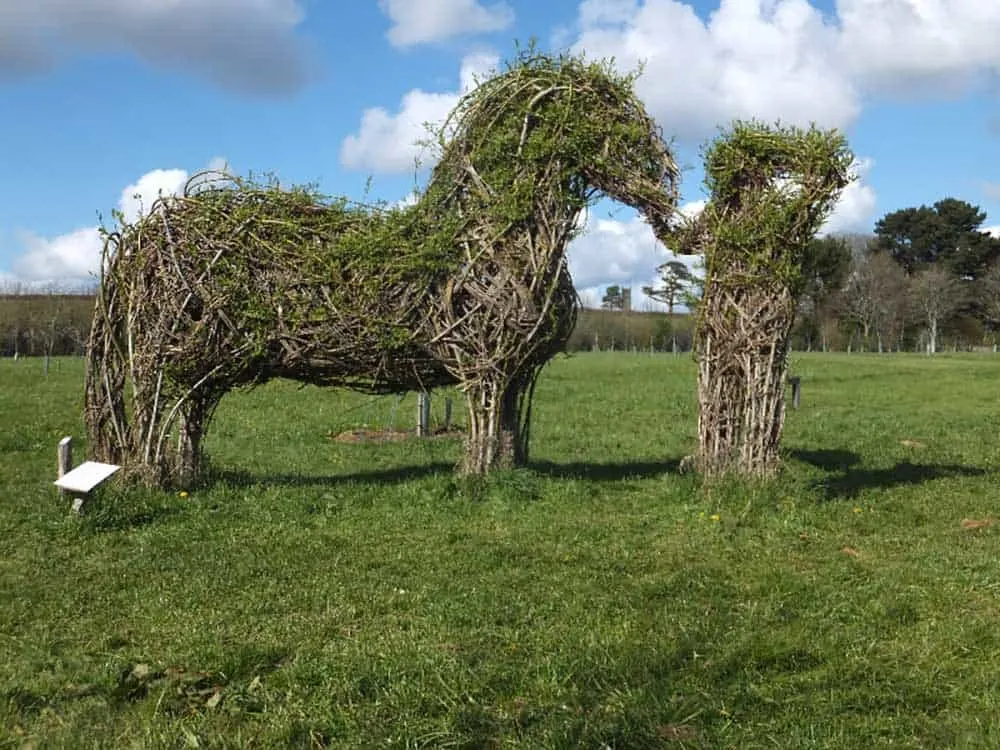
Willows can be manipulated into just about any shape, making them perfect for creating sculptures that come to life when the leaves turn green. This would be a wonderful type of project to get kids involved in the garden!
13. Decorative willow fence
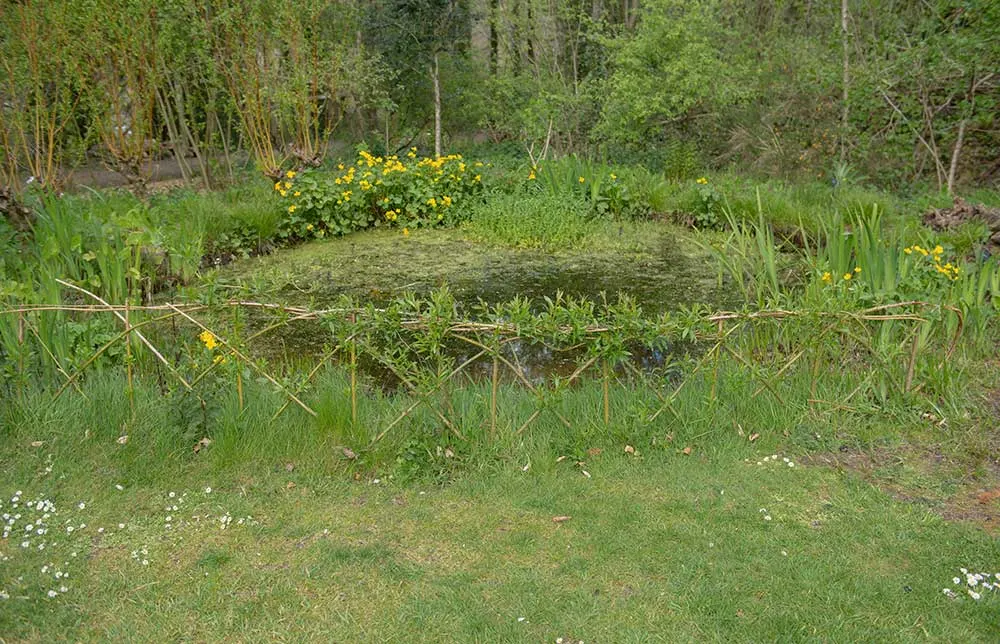
This simple but beautiful fence makes a nice decorative border around a pond in England. This fence is a good example of the versatility of willows for use in functional projects large and small.
14. Willow domes
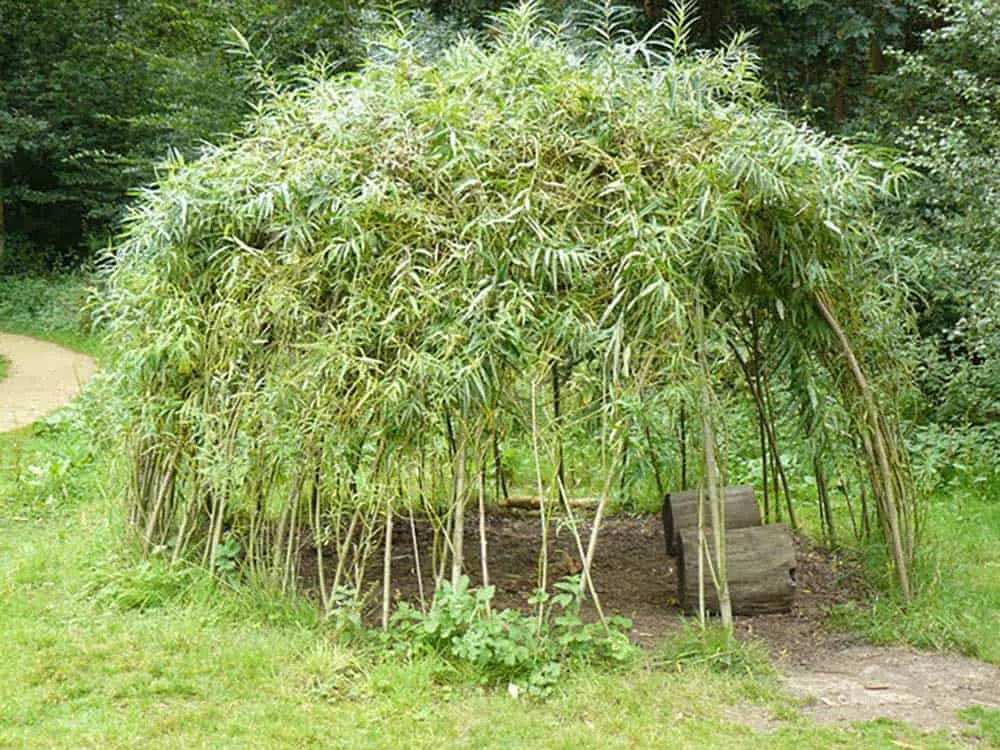
I can’t think of too many things more fun for kids than their own willow dome in the yard. And what a cool way to get them outdoors, enjoying nature and watching their dome change over the years as the willows grow!
15. Simple willow arch
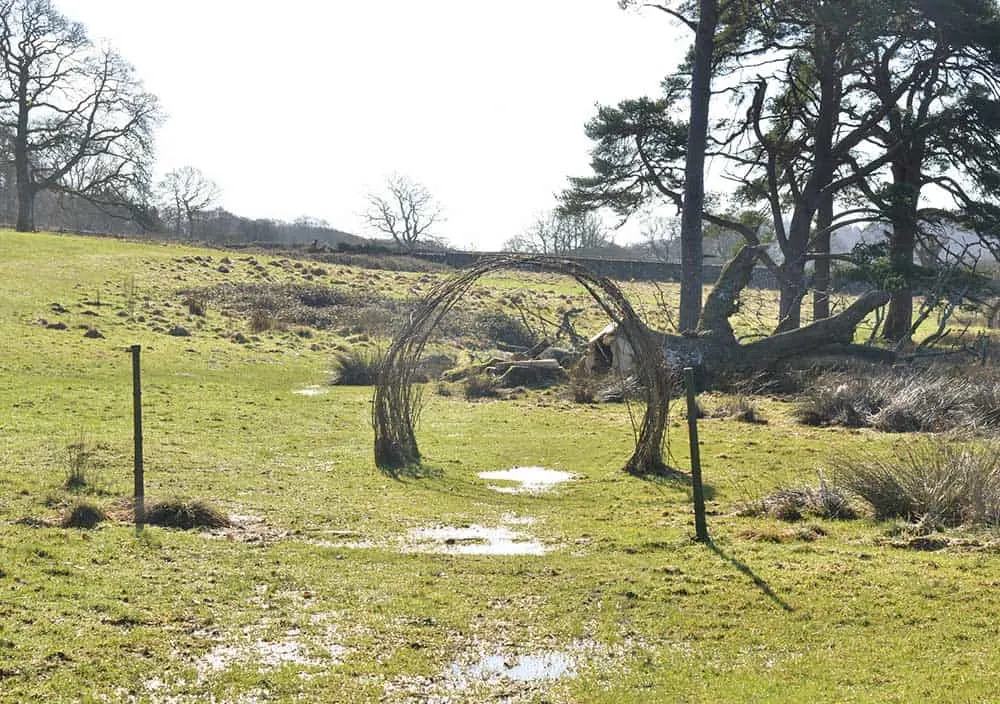
Finally, here is another archway that shows simple can be beautiful. A minimalist willow arch in this country field gives the scene a fun, whimsical feel.
Remember, these project ideas are only the beginning. Feel free to adapt and combine different concepts to suit your vision and space.
Living willow structures bring a touch of magic and sustainability to any space. From their environmental benefits to their versatility and aesthetic appeal, these living creations have captured the hearts of many. By exploring the rich history, benefits, and project ideas, we hope to inspire you to embark on your own creative journey.
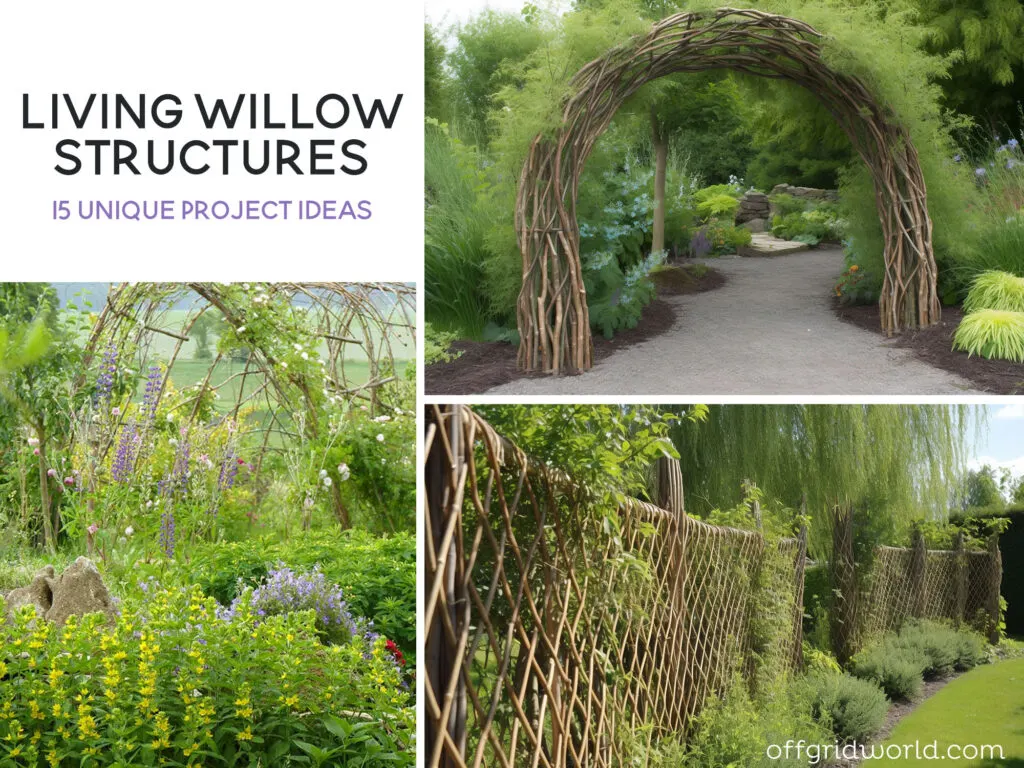
Unleash your imagination and bring the beauty of living willow into your surroundings. Let the supple branches of willow create a haven of natural wonder, whether it’s an archway, a fence, or a sculptural masterpiece. Embrace the enchantment of living willow and revel in the sustainable beauty it brings to your life. If your growing conditions are right, willows can provide beautiful green structures on your property that last for years!

LV Residential Life – November Highlights – Taylor Scott Nelson
Wednesday 18th of July 2018
[…] ago come out to harvest willow for basketry. I was very interested in helping because I wanted to know more about willow and how to use it. We spent a day coppicing and pollarding willow in various gardens and around the solar shower – […]